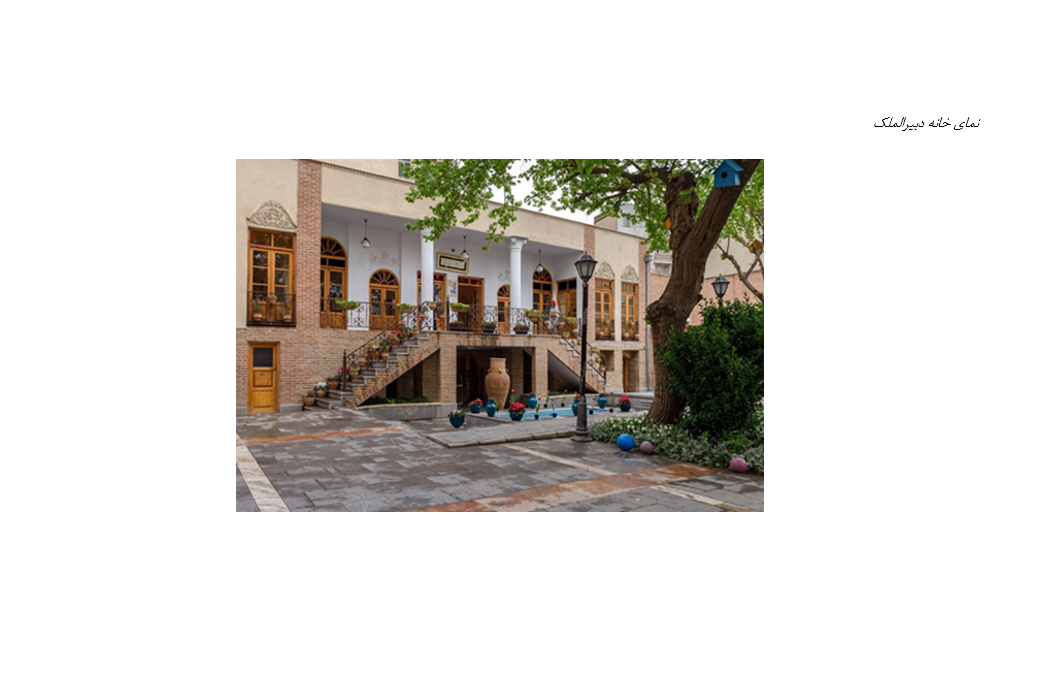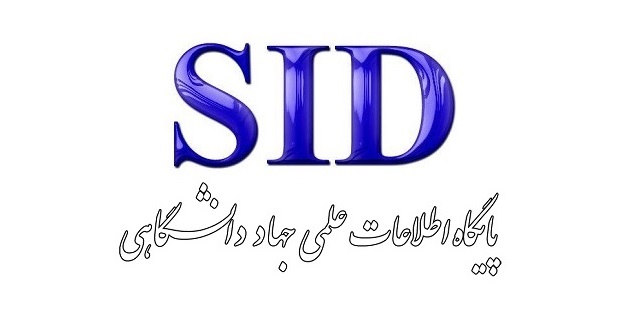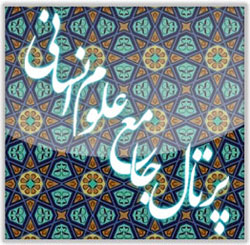تحلیل تزیینات در معماری با رویکرد "آیکونولوژی" به منظور بازتولید معماری هویتگرا نمونهی موردی: نمای خانههای قاجاری تهران
کلمات کلیدی:
آیکونولوژی, معماری هویت گرا, خانه های قاجاری, تزئیناتچکیده
دوره قاجار به عنوان یک دوره حیاتی در تاریخ معماری خانهسازی و سکونت در ایران شناخته میشود. این دوره با نقوش تزئینی خاصی شامل اشکال انتزاعی اسلیمی و خطایی، گلهای فرنگی، مناظر و شکارگاهها، گلدانهای پرگل و تصاویری از شاهان، درباریان و شاهزادگان، نقش شیر و خورشید و فرشتگان شناخته میشود. تأثیرات روابط فرهنگی و تبادلهای فزاینده با غرب، به تنوع رنگ و موضوعات دینی و فرهنگی این نقوش افزوده است. نمای ساختمان به عنوان نخستین مؤلفه ظاهری بنا، میتواند احساسات و ادراک مخاطبان را تحت تأثیر قرار دهد و بهعنوان بخشی از شواهد تاریخی معماری ایران، حامل معانی عمیقتری است که نیازمند تحلیل جدی است. در این راستا، بیان معانی فرهنگی و هویتی در برابر غلبه بر کمیت و نگاهی سلطهجویانه در عصر مدرن، ضرورتی است که نادیده گرفتن آن میتواند به دگرگونی در فهم ما از این دوره بینجامد. پژوهش حاضر، به کاوش در لایههای عمیقتری از هویت فرهنگی و ساختار تزئینات نمای خانههای قاجاری میپردازد. هدف اصلی آن احیای معماری مبتنی بر هویت از طریق رویکرد آیکونولوژی در تزئینات نمای این خانههاست. برای این منظور، از روشهای تحلیلی مختلفی نظیر تحلیل محتوا و خوانش نشانهها استفاده میشود. با تأکید بر آیکونولوژی آروین پانوفسکی، روابط میان معنی و فرم آثار بررسی خواهد شد. این پژوهش از یک رویکرد اکتشافی متوالی بهره میبرد که شامل جمعآوری دادهها از طریق مطالعات میدانی و اسنادی و تحلیل مرحله به مرحله نشانهها است. فرآیند پژوهش به شبیهسازی گام به گام مراتب سهگانه آیکونولوژی در مطالعه نماهای خانههای قاجاری و بازتولید معماری هویتگرا با استفاده از برچسبهای مفهومی منجر خواهد شد. این هدف با تحلیل دقیق عناصر تزئینی و شناسایی عواملی که قادر به تقویت هویت معماری ایرانی هستند، تحقق مییابد. این پژوهش به کشف ماهیت و حقیقت وجودی تزئینات نمای خانههای قاجاری پرداخته و به پرسش “چگونه میتوان با بهکارگیری رویکرد آیکونولوژی به تحلیل تزئینات نمای خانههای قاجاری تهران پرداخته و به احیای معماری هویتگرا یاری رساند؟” پاسخ میدهد. همچنین، ضرورت رویکرد آیکونولوژی در خوانش تزئینات معماری و کشف معانی عمیقتر و فراتر از تعاریف قراردادی را بررسی میکند. ابزارهای جمعآوری دادهها شامل مشاهده میدانی و تحلیل اسنادی است. پژوهشهای میدانی بهمنظور شناسایی و تحلیل تزئینات نمای کالبد معماری از اهمیت ویژهای برخوردارند. با این حال، محدودیت منابع در زمینه تاریخ معماری ایران یک چالش مهم است که باید در نظر گرفته شود.
دانلودها
مراجع
Abdali, S. (2021). Identity in Architecture and Social Relations: A Contemporary Exploration. Journal of Iranian Architectural Research, 19(5), 90-110.
Ahmadi, M. (2014). The Art and Architecture of Qajar Period in Iran. University of Tehran Press.
Ahmadi, S. (2022). History of Iranian Architecture: Social and Cultural Influences. University Press.
Alizadeh, M. (2021). Analyzing Symbolism in Qajar Architectural Decorations. Journal of Art and Architecture, 14(2), 47-58.
Alizadeh, M., & Sadat, R. (2021). Analyzing Colors in Qajar Architectural Decorations: Exploring Meaning and Social Impact. Journal of Art and Architecture, 16(2), 49-60.
Amini, M., & Paknia, A. (2020). Qajar Architecture: A Link between Culture and Art. Journal of Art and Architecture, 4(1), 25-45.
Ashtiani, F. (2013). Iconography in Persian Art: A Study of Qajar Architecture. Journal of Iranian Studies, 5(2), 45-62.
Azad, M. (2019). The Role of Decorative Arts in Shaping Iranian Identity. Iranian Journal of Art and Architecture.
Azarnoosh, M. (2023). Symbolism in Islamic Art: A Comparative Study of Qajar House Decorations. Journal of Arts and Crafts, 15(3), 45-55.
Bakhtiari, M., & Yousefi, F. (2022). Identity and Diversity in Islamic and Iranian Architectural Decorations. Journal of Art and Architecture, 11(3), 10-25.
Belting, H. (2001). An Anthropology of Images: Picture. Medium, Body. Princeton University Press.
Erfani, S. (2021). The Influence of Social Changes on Architectural Identity: A Study of Historic Contexts. Journal of Architectural Research, 16(4), 90-105.
Friedländer, S. (2002). Early Netherlandish Painting. Yale University Press.
Hosseini, M. (2022). Mirror Work: Transforming Spaces in Qajar Architecture. Journal of Iranian Architecture, 18(1), 88-99.
Hosseini, M. (2023a). Environmental Elements and Identity Building in Contemporary Architecture. Journal of Urban Planning, 14(1), 50-70.
Hosseini, M. (2023b). The Impact of Social Environment on the Architecture of Qajar Houses: A View on Collective Identity. Journal of Sociology and Architecture, 8(2), 92-102.
Kasegar, S., & Sohrabzadeh, A. (2021). Decorations in Private and Public Spaces: Identity and Meaning. Journal of Humanities, 17(1), 30-45.
Kazemi, S. (2016). Cultural Influences on Qajar Architecture: A Study of Historic Houses. Journal of Islamic Architecture, 5(1), 24-36.
Khatibi, A. (2006). The Architecture of the Qajar Period: A Study of the Cultural and Historical Context. Tehran University Press.
Khosravi, S. (2018). Cultural Identity and Architecture: The Case of Qajar Houses. International Journal of Architectural Heritage, 12(3), 345-360.
Koosha, A. (2020). Interaction between Humans and Nature: Symbolism in Qajar Architectural Decorations. Journal of Art Research, 14(1), 39-50.
Masoudi, A. (2022). Application of Semiotics in Analyzing Identity in Iranian Architecture. Journal of Cultural Studies in Architecture, 18(2), 105-125.
Moghadam, A. R. (2022). Social and Political Architecture during the Qajar Era: The Role and Influence of Key Figures. Journal of Iranian History, 11(3), 88-97.
Moghadamzad, H. (2023). Aesthetic and Semantic Directions of Qajar Decorations. Journal of Art and Society, 19(2), 43-54.
Mohebi, J. (2020). Semiotic Analysis of Decorations in the Facades of Old Buildings. Journal of Architecture and Social Sciences, 19(5), 22-37.
Mousavi, A. (2023). Architectural Transformations during the Qajar Period: Analyzing Iconic Houses. Journal of Architecture and Art Research, 11(4), 77-89.
Namvar Motlagh, M. (2009). Art and Architecture of the Qajar Period: Symbolism and Identity. University of Art Publications.
Nikfetrat, M., & Bitaraf, E. (2016). The Impact of Cultural Factors on Native Iranian Architecture from a Sustainability Perspective. Art and Architecture Studies, 4(4/5), 11-12.
Nikfetrat, M., Bitaraf, E., Vaziei, M., Azizi, S., & Mousavi, H. (2018). Representation of Meaning in Architecture Using Umberto Eco's Semiotics Approach. Proceedings of the First National Conference on Iranian-Islamic City,
Pakzad, M. (2016). Reading Architectural Texts: Towards a New Methodology. Journal of Architectural Studies, 10(2), 40-60.
Panofsky, E. (1955). Meaning in the Visual Arts. University of Chicago Press.
Panofsky, E. (1991). Studies in Iconology: Humanistic Themes in the Art of the Renaissance. Harper & Row.
Rahmati, N. (2022). Architectural Spaces and Collective Memory Reinforcement: Comparing Old and New Cityscapes. Journal of Architecture and Culture, 15(4), 55-75.
Rezai, N., & Hamdani, S. (2023). Urban Development and Social Transformations in the Qajar Era. Journal of Social Research, 10(3), 64-78.
Sadeghi, S. (2016). History and Transformations of Qajar Architecture. National Architecture Quarterly, 2(1), 46-50.
Sadiqi, M. (2010). Symbolism in Persian Architecture: A Historical Perspective. Journal of Persian Studies, 5(2), 45-67.
Safai, S. (2021). Color and Meaning in Qajar Architecture: A Semiotic Approach. Journal of Iranian Architecture, 12(1), 27-38.
Salehi, S. (2023). Decorative Elements in Tehran’s Residential Architecture. Cultural-Artistic Journal, 15(2), 31-42.
Shafiei, N., & Zahedi, M. (2021a). Aesthetic and Decorative Elements in Qajar Houses: Case Study of Dabiralmolk House. Journal of Art History, 19(2), 73-85.
Shafiei, N., & Zahedi, M. (2021b). Qajar Architecture and Its Impact on Cultural Identity. Journal of Art Studies, 12(3), 55-70.
Sharifi, S. (2018). Revitalizing Identity in Decorations of Historical Houses: A Case Study of Dabiralmolk House. Quarterly Journal of Architectural and Urban Research, 5(2), 46-60.
Yaghmaei, A. (2015). Portraits of Iranian Architects during the Qajar Era. Honar Publications.
Zahedi, T., & Asoudeh, M. (2021). Decorations in Iranian Architecture: Between Art and Identity. Journal of Artistic Studies, 9(3), 80-92.

دانلود
چاپ شده
ارسال
بازنگری
پذیرش
شماره
نوع مقاله
مجوز
حق نشر 2025 Laleh Hasanzadeh (Author); Mobina Rouhi (Corresponding Author); Roxana Abdollahi (Author)

این پروژه تحت مجوز بین المللی Creative Commons Attribution-NonCommercial 4.0 می باشد.







